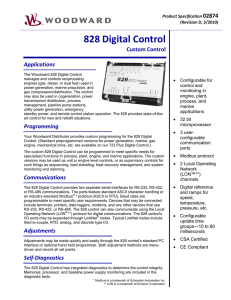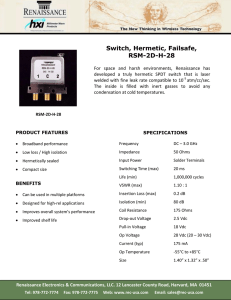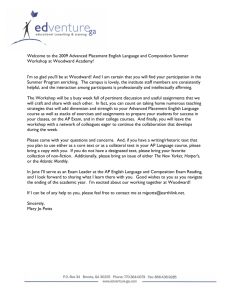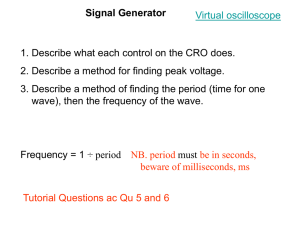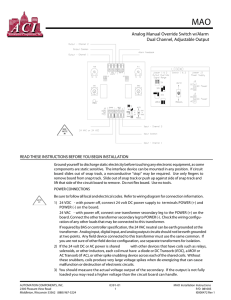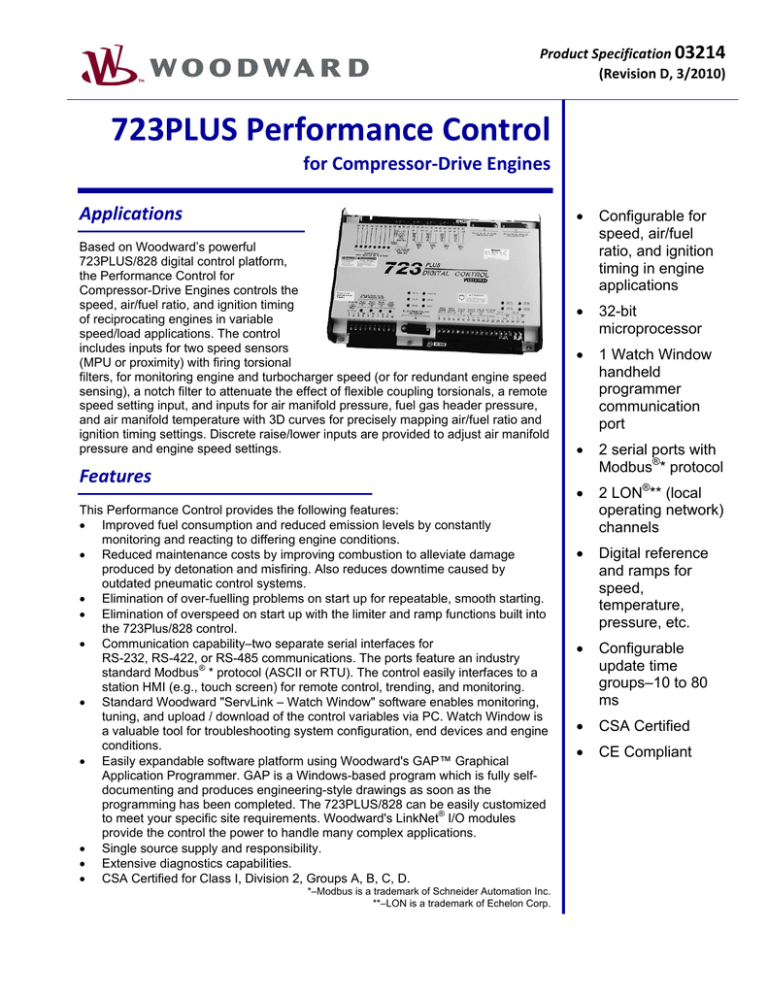
Product Specification 03214 (Revision D, 3/2010) 723PLUS Performance Control for Compressor‐Drive Engines Applications Based on Woodward’s powerful
723PLUS/828 digital control platform,
the Performance Control for
Compressor-Drive Engines controls the
speed, air/fuel ratio, and ignition timing
of reciprocating engines in variable
speed/load applications. The control
includes inputs for two speed sensors
(MPU or proximity) with firing torsional
filters, for monitoring engine and turbocharger speed (or for redundant engine speed
sensing), a notch filter to attenuate the effect of flexible coupling torsionals, a remote
speed setting input, and inputs for air manifold pressure, fuel gas header pressure,
and air manifold temperature with 3D curves for precisely mapping air/fuel ratio and
ignition timing settings. Discrete raise/lower inputs are provided to adjust air manifold
pressure and engine speed settings.
Features This Performance Control provides the following features:
Improved fuel consumption and reduced emission levels by constantly
monitoring and reacting to differing engine conditions.
Reduced maintenance costs by improving combustion to alleviate damage
produced by detonation and misfiring. Also reduces downtime caused by
outdated pneumatic control systems.
Elimination of over-fuelling problems on start up for repeatable, smooth starting.
Elimination of overspeed on start up with the limiter and ramp functions built into
the 723Plus/828 control.
Communication capability–two separate serial interfaces for
RS-232, RS-422, or RS-485 communications. The ports feature an industry
standard Modbus® * protocol (ASCII or RTU). The control easily interfaces to a
station HMI (e.g., touch screen) for remote control, trending, and monitoring.
Standard Woodward "ServLink – Watch Window" software enables monitoring,
tuning, and upload / download of the control variables via PC. Watch Window is
a valuable tool for troubleshooting system configuration, end devices and engine
conditions.
Easily expandable software platform using Woodward's GAP™ Graphical
Application Programmer. GAP is a Windows-based program which is fully selfdocumenting and produces engineering-style drawings as soon as the
programming has been completed. The 723PLUS/828 can be easily customized
to meet your specific site requirements. Woodward's LinkNet® I/O modules
provide the control the power to handle many complex applications.
Single source supply and responsibility.
Extensive diagnostics capabilities.
CSA Certified for Class I, Division 2, Groups A, B, C, D.
*–Modbus is a trademark of Schneider Automation Inc.
**–LON is a trademark of Echelon Corp.
Configurable for
speed, air/fuel
ratio, and ignition
timing in engine
applications
32-bit
microprocessor
1 Watch Window
handheld
programmer
communication
port
2 serial ports with
Modbus®* protocol
2 LON®** (local
operating network)
channels
Digital reference
and ramps for
speed,
temperature,
pressure, etc.
Configurable
update time
groups–10 to 80
ms
CSA Certified
CE Compliant
Woodward 03214 p.2
Programming Woodward can provide custom programming for the 723PLUS Digital Control. Standard pre-programmed versions
for power generation, marine, gas engine, mechanical drive, etc. are also available. The custom 723PLUS Digital
Control can be programmed to meet specific needs for specialized functions in process, plant, engine and marine
applications. The custom versions may be used as unit or engine level controls, or as supervisory controls for such
things as sequencing, load shedding, heat recovery management, and system monitoring and alarming.
Adjustments Adjustments may be made quickly and easily through the Watch Window PC Interface or an optional handheld
programmer. Both adjustment methods are menu-driven and record all set points.
Self‐Diagnostics The 723PLUS Digital Control has integrated diagnostics to determine the control integrity. Memories, processor, and
baseline power supply monitoring are included in the diagnostic tests.
Typical 723PLUS/828 Performance Control System Diagram
Woodward 03214 p.3
Specifications Input Power
Low Voltage Model
High Voltage Model
Power Consumption
Inrush Current (low voltage model)
Inrush Current (high voltage model)
18–40 Vdc (24 or 32 Vdc nominal)
90–150 Vdc (125 Vdc nominal)
40 W nominal
7 A for 0.1 ms
22 A for 15 ms
Inputs
Speed Signal Inputs (2)
Speed Input Voltage
Speed Input Frequency
Speed Input Impedance
Discrete Inputs (8)
Discrete Input
Response Time
Impedance
Analog Inputs (4)
Analog Input
Common Mode Voltage
Common Mode Rejection
Accuracy
Load Sharing Input
Analog Input
Common Mode Voltage
Common Mode Rejection
Accuracy
1.0–50.0 Vrms
Analog: 400 Hz to 15 kHz; Digital: 30 Hz to 15 kHz
10 kΩ ±15%
NOTE—EU Directive compliant applications are not currently able to use proximity
switches due to the sensitivity of the switches.
24 Vdc, 10 mA nominal,18–40 Vdc range
10 ms ±15%
2.3 kΩ
±5 Vdc or 0–20 mA, transducers externally powered
40 Vdc
0.5% of full scale
0.5% of full scale
0–4.5 Vdc
±40 Vdc
1.0% of full scale
1.0% of full scale
Outputs
Analog Outputs 0–1 or 4–20 mA (2)
Analog Output
Accuracy
Analog Outputs 0–20 or 0–200 mA (2)
Analog Output
Accuracy
Relay Contact Outputs (3)
Contact Ratings
0–1 mA or 4–20 mA (max. 600 Ω load)
0.5% of full scale
0–20 mA (max. 600 Ω load) or 0–200 mA (max. 70 Ω load)
0.5% of full scale
2.0 A resistive @ 28 Vdc; 0.5 A resistive @ 125 Vdc
Environment
Operating Temperature
Storage Temperature
Humidity
Mechanical Vibration
Mechanical Shock
EMI/RFI Specification
–40 to +70 °C (–40 to +158 °F)
–55 to +105 °C (–67 to +221 °F)
95% at +20 to +55 °C (+68 to +131 °F)
Lloyd’s Register of Shipping Specification Humidity Test 1
Lloyd’s Register of Shipping Specification Vibration Test 1
US MIL-STD 801C Method 516.2, Proc. I, II, V
Lloyd’s Register of Shipping Specification
EN 50081-2 and EN 50082-2
Compliance
CSA Certified
American Bureau of Shipping (ABS)
Bureau Veritas (BV)
Det Norske Veritas (DNV)
Germanischer Lloyd (GL)
Lloyd’s Register (LR)
Nippon Kaiji Kyokai (NKK)
Registro Italiano Navale (RINA)
European Union (EU)
Class I, Division 2, Groups A, B, C, & D
2007 Steel Vessel Rules 1-1-4/7.7, 4-2-1/7.3, 4-2-1/7.5.1, 4-9-3/17, 4-9-7/13,
4-9-2/11.7 & 4-9-4/23 (Low Voltage Models only)
Certified for Environmental Category EC Code: 33
Certified for use on AUT-UMS, AUT-CSS, AUT-PORT and AUT-IMS Classed
Vessels
Certified for Marine Applications, Temperature Class B, Humidity Class A, Vibration
Class B, EMC Class A, and Enclosure Class B per DNV Rules for Ships Pt. 4, Ch. 9
Control and Monitoring Systems and Pt. 4, Ch.’s 2 & 3, Rotating Machinery
Environmental Category C; EMC2 per Type Tests Part 2, Edition 2003: Regulations
for the Use of Computer and Computer on Board
LR Type Approval Test Specification No. 1:1996 for Environmental Categories
ENV1, ENV2, and ENV3
Rules Ch. 1, Part 7, of Guidance for the approval and Type approval of materials and
equipment for marine use and relevant Society’s Rules. (Low Voltage Models only)
RINA Rules for the Classification of Ships – Part C Machinery, Systems and Fire
Protection – Ch. 3, Sect. 6, Tab. 1
Compliant with EMC Directive 2004/108/EC and Low Voltage Directive 2006/95/EC
Woodward 03214 p.4
723PLUS Outline Drawing
(Do not use for construction)
For more information contact:
PO Box 1519, Fort Collins CO, USA 80522-1519
1000 East Drake Road, Fort Collins CO 80525
Tel.: +1 (970) 482-5811 Fax: +1 (970) 498-3058
www.woodward.com
Distributors & Service
Woodward has an international network of distributors and service facilities.
For your nearest representative, call the Fort Collins plant or see the
Worldwide Directory on our website.
This document is distributed for informational purposes only. It is not to be construed as
creating or becoming part of any Woodward contractual or warranty obligation unless
expressly stated in a written sales contract.
Copyright © Woodward 2000–2010, All Rights Reserved

